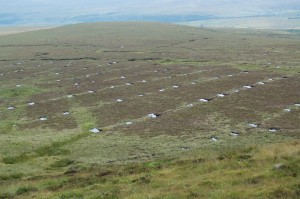There is more carbon locked up in UK peat soils than in all the trees of Britain and France. It represents 42 per cent of our entire carbon stock. That is why Moorland Association does so much work to protect these valuable peatlands.
Sadly, too much peat has been drained for agriculture with the most serious effects seen in areas such as lowland fens. It has been dug for fuel and planted with dense forestry.
Now more is known about the importance of peat, our members are heavily involved in peatland protection and link with national agencies like Natural England and partnerships for important studies and projects.
The management on grouse moors helps prevent overgrazing, bracken invasion and summer wildfires. It has largely preserved the carbon locked-up in underlying peat.
However, carbon can leak out from peat, if exposed to the atmosphere or of it becomes dry, and it escapes as the harmful greenhouse gas, carbon dioxide. Carbon can also dissolve leading to colour in water.
To make sure it stays locked-up, and create the best conditions for trapping even more carbon, our members have embarked on a number of bare peat vegetation and drain blocking projects.
They have plugged well over 4000km of moorland drainage ditches to help re-wet bogs and many more are planned. They are also working with peatland restoration partnerships to re-vegetate and re-profile bare and eroding areas, where the vast majority of upland carbon loss is occurring through natural processes.
As 70 per cent of the UK’s drinking water comes from the uplands, this work is important in mitigating the effects of climate change and it helps improve water quality for millions of people.
MA members are looking at ways to reintroduce the king of carbon capture, Sphagnum moss, on deep peat. This ongoing work is vital and requires innovation, widespread trials and monitoring.
This could potentially achieve climate change targets for the UK set at Kyoto without adverse consequences for land use.
Rewetting peat and improving its function will enable the moors to store more water and reduce the rate of run off, mitigating flooding. Increasing the roughness of the surface with mosses will also help to slow the flow.









